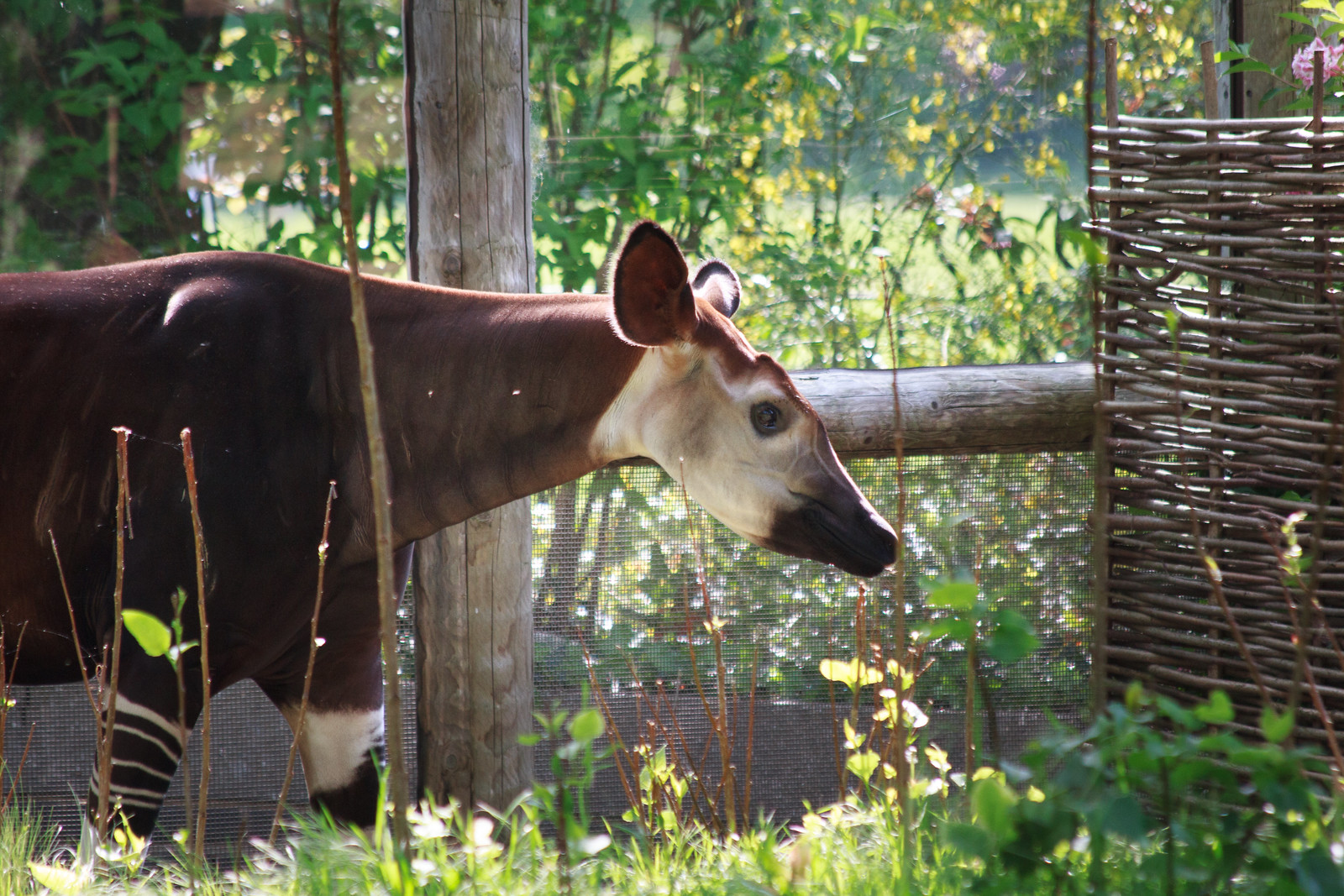Following up on my post about the Royal Menagerie at the Tower of London, I wanted to write about its descendant, the Zoological Society of London (or Z-as-in-Zed-S-L) in Regent’s Park.
London Zoo is a bit out of the way by public transportation. The Underground skirts the edge of Regent’s Park, making a single stop at the southern gate before veering off north for Camden. From there you board a crawling bus headed up some charmless back street, or take a pleasant (but very long) walk to the northern edge of the park. Michelle and I did both one May afternoon and got to the zoo about an hour before closing time.
ZSL isn’t a big zoo, but it manages an impressive collection. The exhibits are all very modern and as natural as they can be given the limited space. We spoke to a few of the keepers and they seemed enthusiastic and knowledgeable.
As is often the case in London, ZSL has some unique history. It was the first zoo opened specifically for scientific research; for its first twenty years it wasn’t even open to the public. Charles Darwin became a fellow of the zoo in 1839 and one resident, an orangutan named Jenny, inspired him with her near-humanity.
With limited time to look around, there was one animal I knew I must see: the okapi. It’s not much to look at, but this awkward, donkey-like ungulate, native to the Ituri Rainforest of central Africa, is famous for managing to elude science until 1901.
There had been rumblings of an unknown antelope or horse-like animal in the forests of the Belgian Congo for years. Henry Morton Stanley, the British-American explorer, searched for the creature that his guides called “atti” throughout the 1890s but couldn’t track one down.
In 1900, the British governor of Uganda, Sir Harry Johnston, escorted a group of kidnapped pygmies back to their home in the Belgian Congo. In camp they told him stories of the mystery animal, and although Johnston never saw one, he was gifted a pair of striped bandoliers made from the skin of the animal they knew as “o’api”.
Johnston sent the skins to London, to secretary Philip Sclater of the Zoological Society. Based on his examination of the skin and hearsay from Johnston, Sclater believed the okapi would be a kind of forest zebra. He published a tentative description under the name “Equus johnstoni”:
Equus (?) johnstoni, sp. nov.
Supra saturate nigro-cinereus aut fulvus; cruribus intus albicantibus, cruribus extus et lateribus fasciis nigris, utrimque castaneo disticte limbatis, ornatis; capite longo extensor.
Hab. In sylvis fluvio Semliki adjacentibus
Translated from the Latin, it reads (very roughly!):
Johnston’s horse (?), new species
Upper part dark black-brown or gray; legs whitish inside, black on outer parts, with black striped sides, bordered by chestnut at both ends, ornate; head very long.
Inhabits the forest along the river Semliki [in the Congo]
Within a few years, more specimens proved that the okapi was actually a primitive, long-lost relative of the giraffe. Despite the short neck and horselike appearance, the shape of the okapi’s skull, the long black tongue, and the bony nubs between the male okapi’s ears give away as a giraffid. In motion, the resemblance is noticeable; okapis walk like giraffes, moving their front and rear legs simultaneously in a swaying lockstep gait.
100 years later, the okapi is still rare and secretive. We know they’re endangered and that their numbers are declining from habitat destruction and hunting, but what they do in the deep forest remains a mystery. The first picture of a wild okapi was only taken in 2008, by a ZSL trail camera in Congo’s Virunga National Park. Most of what we know about the species has been learned from captive animals in zoos.
ZSL’s two okapis, Oni and Mbuti, are a breeding pair and ZSL is a key collaborator in the worldwide conservation effort to save the species from extinction. Okapis are found in less than 30 zoos and preserves worldwide, so it’s a real treat to see such a unique animal in person. Here are a few more pictures of Oni and Mbuti for you to enjoy!

Oni, the female okapi.

Mbuti, the male okapi, tries to peek over the fence at Oni. Note the ossicones, the horn-like protuberances on his head.
